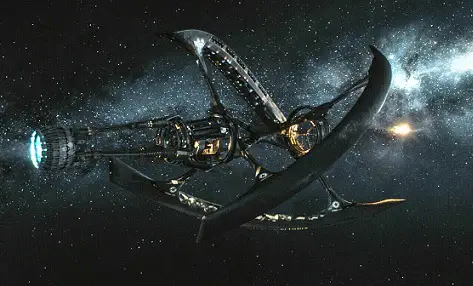| Back to Back Issues Page |
 |
|
Real World Physics Problems Newsletter - Passengers, Issue #42 June 18, 2017 |
The Science Fiction Movie: Passengers
Source: https://www.space.com/35133-how-realistic-ship-from-passengers.html
The point of this newsletter is not really to go into the story of the movie, but to talk about some of the physics depicted in it, particularly the physics of the spacecraft and its alignment with reality. What first got my attention (in addition to the cool spacecraft design) was the use of a deflection field to protect the high speed spaceship from collision damage from objects such as asteroids. Early on in the movie you see space rocks impact the deflection field and the energy being dissipated, except (spoiler alert) for one really large space rock that breaches the shield and damages the ship as a result. I have read before that for ships to cover the enormous distances between Earth and other viable planets to live on, they would have to travel extremely quickly, like one tenth of the speed of light, in order for the trip to potentially take dozens of years, as opposed to thousands of years with current spacecraft velocity. This high speed can probably be achieved with a combination of long-term propulsion using ion rockets (shown in the spaceship of the movie) and gravitational slingshot maneuvers around a sufficient number of planets (not discussed in movie). But for such a high speed, at a tenth the speed of light, even an impact with a small rock weighing 100 grams would release about as much energy as the atomic bomb at Hiroshima. Clearly, you need to prevent such an impact, and that's why you need a shield of some sort. Now, in the movie they say the ship is going at half the speed of light, but really, a tenth the speed of light is more realistic, not just from a physics perspective, but from a safety perspective. Ultimately, you need to be able to protect the ship from catastrophic damage resulting from collisions with space objects. But keep in mind that space is almost entirely empty and the chances of hitting something, even if it's tiny, is quite low, but you still need to have a way of protecting the ship in case it does hit something. The movie didn't get great reviews, but I think it had awesome set pieces, some good physics realism, and a pretty moving story line in my opinion. I think travel in outer space, especially
over long distance (such as for colonization purposes) is mostly about physics and the associated hostility of what lies beyond the safety net of our little blue planet.
|
| Back to Back Issues Page |
